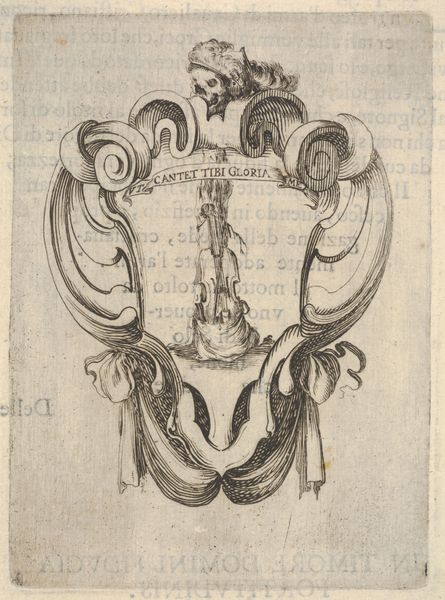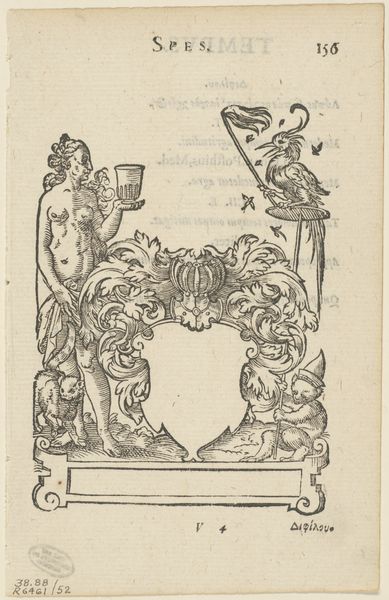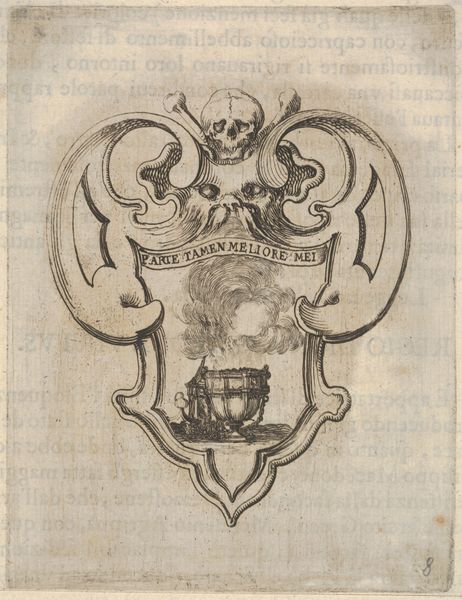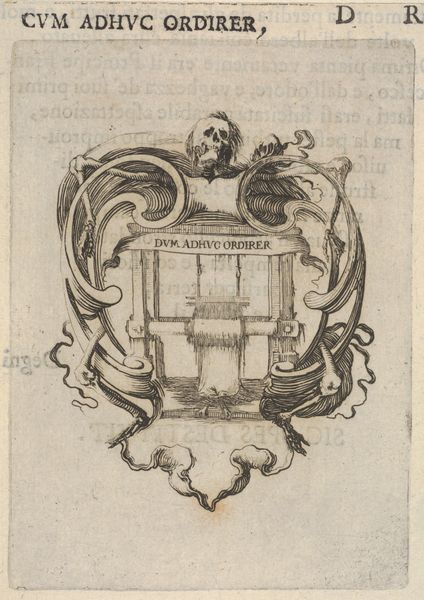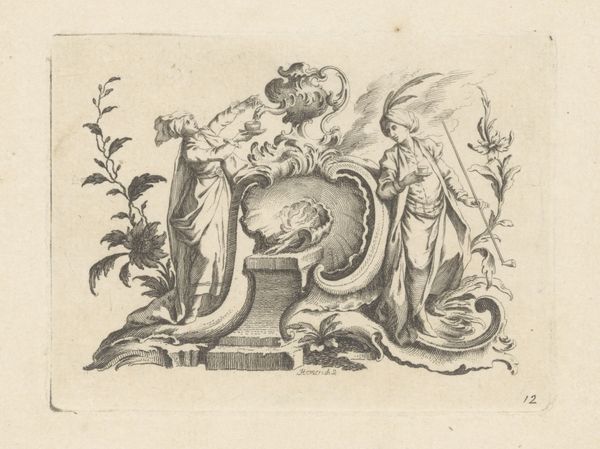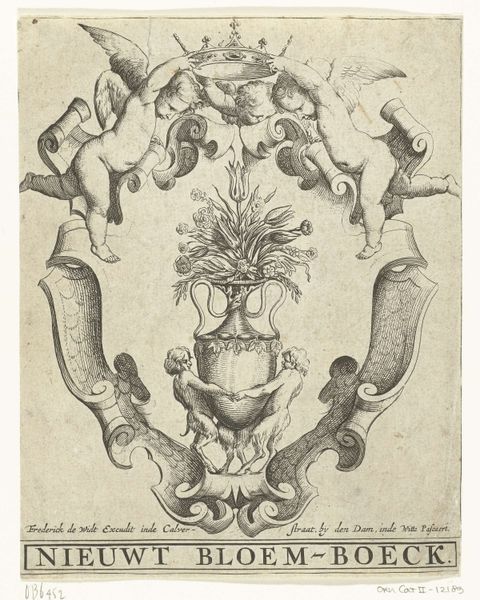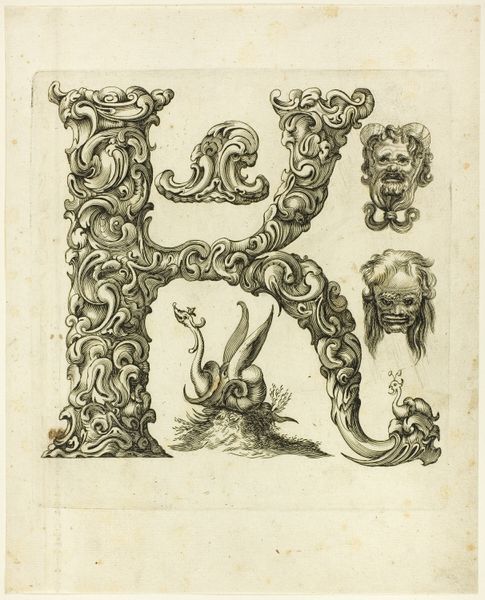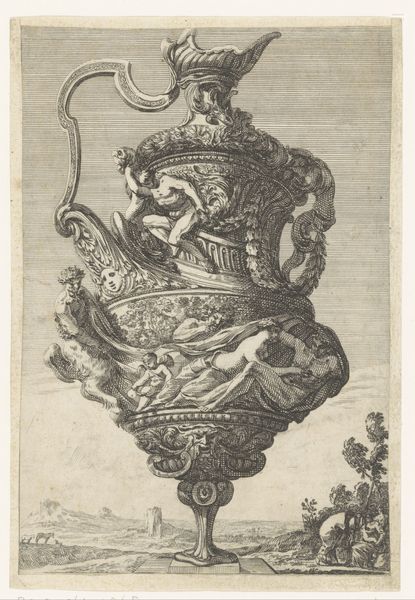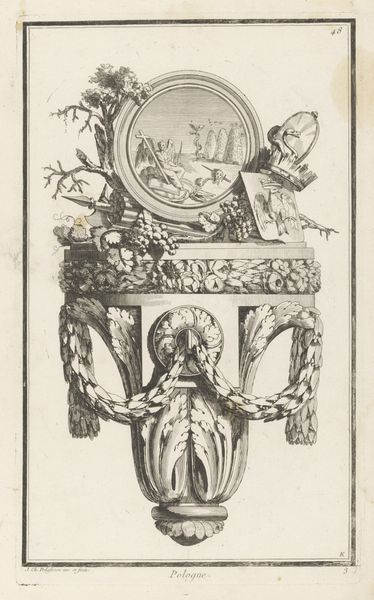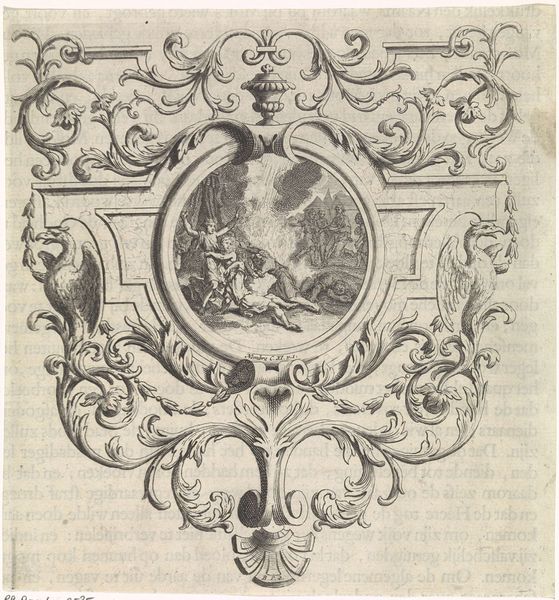
A cartouche with a tree blowing in the wind, a skull with drapery at top, bones to either side, from 'Eight Emblems for the Funeral of Francesco de Medici' (Huit emblèmes pour les funérailles du prince François de Médicis) 1640 - 1660
0:00
0:00
drawing, print, engraving
#
drawing
#
allegory
# print
#
mannerism
#
vanitas
#
history-painting
#
engraving
Dimensions: sheet: 8 9/16 x 5 1/2 in. (21.7 x 14 cm) mount: 10 3/8 x 7 3/16 in. (26.3 x 18.2 cm)
Copyright: Public Domain
Editor: Here we have Stefano della Bella's "A cartouche with a tree blowing in the wind, a skull with drapery at top, bones to either side, from 'Eight Emblems for the Funeral of Francesco de Medici,'" created between 1640 and 1660, a print combining drawing and engraving. It feels incredibly bleak; the stark lines emphasize a sense of loss. What do you see in this piece, especially considering its formal elements? Curator: The composition certainly drives home a central theme. Consider the dynamism—the turbulent wind's effects upon the tree. Observe the curve that repeats from the tree's branches into the framing cartouche and the drapery of the skull. See how the strong diagonal lines create a sense of imbalance, destabilizing the image and leading our eye from the skull directly to the bent tree. Editor: That's fascinating, I hadn't noticed how active those lines are! But why include a skull at all? Is it not distracting from the tree? Curator: Consider the skull less as a subject and more as an organizing motif, serving almost as an architrave completing the 'structure'. It enhances the engraving’s allegory. Death and the fragility of life are common subjects of 17th-century art. Editor: So, you're saying that the skull is less about vanitas and more about the composition of the piece overall? The placement, balance, the curves? Curator: Precisely. The artist integrates potentially disparate elements to underscore instability and ephemerality via an inherent visual discordance. Without the curve and the position, the tree's intended meaning could be lost on the viewer. The sharp lines communicate the violent nature of death as well. Editor: I appreciate this emphasis on visual relationships within the work. Seeing how the skull and wind-swept tree contribute to a bigger visual idea offers a different lens for analysis! Curator: Indeed. I am pleased to have broadened the appreciation of such dynamic balance for you.
Comments
No comments
Be the first to comment and join the conversation on the ultimate creative platform.
